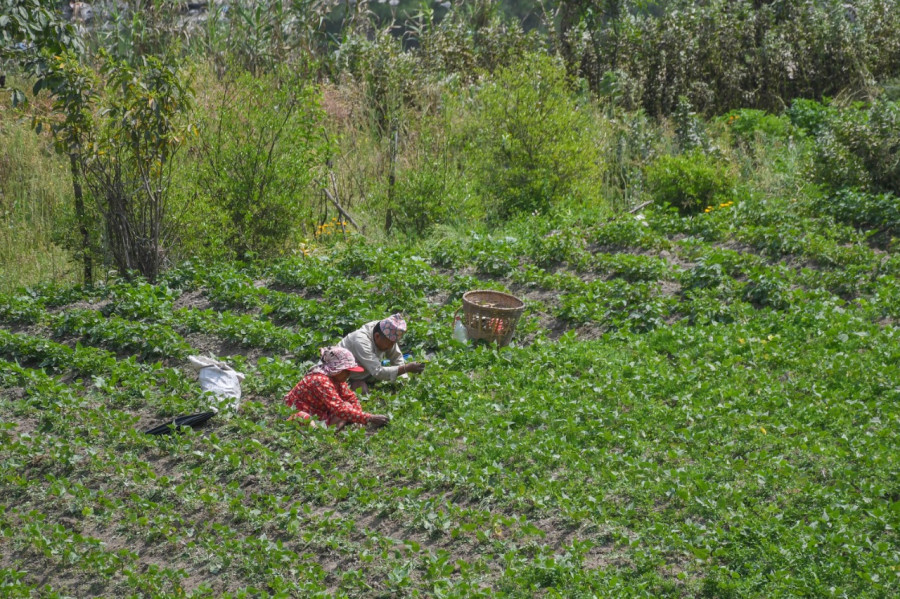Columns
Cooperatives in agricultural transformation
Having the right people at the governance and management levels is critically important for the success of cooperatives.
Padma Singh
Cooperatives are member-driven organisations with a business mind and a social heart that are founded to satisfy immediate needs and address vulnerabilities. Cooperatives allow people to pool their resources to create their own economic opportunities, thereby changing individual risk into collective risk. Cooperatives have proven to be resilient and capable of responding to the consequences of crises like the Covid-19 pandemic and the 2008 economic crisis. Studies show that small farmers working collectively in strong producer organisations and cooperatives were better able to take advantage of market opportunities and stave off the negative consequences of food crises.
As per the World Cooperative Monitor (2019), more than 12 percent of humanity is part of any of the 3 million cooperatives in the world, contributing to sustainable economic growth and quality employment, employing 280 million people across the globe.
The formal development of cooperatives in Nepal dates from the establishment of the Bakhan Multipurpose Cooperative Society in Chitwan in 1957. There is a long tradition of informal community-based cooperatives in Nepal, including savings and credit associations like Dhukuti. The government enacted the first Cooperative Act in 1960, and it has since undergone several amendments, most recently in 2017. In 1992, there were 883 cooperatives in the country. The number has now mushroomed to 35,000 with 6.3 million members. Among them, about 7,230 cooperatives are engaged in core agriculture production.
Although the efficacy of cooperatives in rural socioeconomic change is mixed, there are some encouraging examples of cooperatives being used to restructure the rural economy in Nepal and elsewhere.
Agricultural transformation
The major constraint faced by farmers, especially small-scale farmers, is lack of marketing opportunities. Small-scale farmers are subjected to the “curse of smallness” as their output is too small to entice traders, and their input requirements are also too small to lure input suppliers. And as such, cooperatives fill in the gaps where individual business owners find it unprofitable to provide services or where farmers are unfairly exploited. The Milansar Social Entrepreneur Women’s Cooperative, which operates in Tansen, Palpa with Heifer International’s technical assistance, is a shining example of how cooperatives may help farmers connect to markets.
Lack of access to agricultural loans is a systemic limitation to the commercialisation of the agricultural sector. Despite the regulatory requirement for banks and financial institutions to invest at least 11 percent of their total investment in agriculture, the actual figure is below 7 percent. Because of the considerable risk involved in lending to small-scale farmers, banks are willing to pay a penalty to Nepal Rastra Bank than comply with the regulation. Because cooperatives can minimise transaction costs and lessen the risk of default, they have the potential to serve as a financial intermediary for small-scale farmers.
Inadequate and ineffective service delivery is a significant impediment to agricultural development. Because of institutional inconsistencies, political instability and poor governance, the capacity of institutions established to provide services (agriculture extension, inputs, credit, marketing) has been limited. Cooperatives have the potential to deliver services to the community.
Cooperatives face a fundamental challenge in enhancing their economic viability and institutional sustainability. They fail due to weak governance, poor financial management, inactive members, insufficient member services, lack of working capital and lack of entrepreneurial ability.
Cooperative values and principles are the foundation of cooperatives. The challenge is to link cooperative ideals to governance operations at all levels, including the staff, members and board of directors. It has to be noted that cooperatives have a unique governance structure with the three primary constituents. The board of directors, staff and members with diverse backgrounds striving for the same goal.
Another challenge that cooperatives face globally is staying innovative and competitive. Innovation enhances the likelihood of adapting to changes and discovering new opportunities to provide members with better products and services.
Cooperatives formed with the federation of matured groups have a strong foundation of social capital that makes cooperatives strong. Most of the cooperatives in Nepal have a weak foundation of social capital, resulting in non-performing cooperatives.
Way forward
Strengthening cooperative capacity in several domains such as governance, financial management, business management, and community and stakeholder engagement should be a significant component of the cooperative formation process. Numerous tools are available to assess and analyse capacity gaps in cooperatives. It is critical that cooperative employees and board members fully participate in the assessment process. An improvement plan should then be developed and implemented based on the capacity gaps.
Having the right people at the governance and management levels is critically important for the success of cooperatives. Without them, no matter how much time cooperatives dedicate to capacity building, they will not achieve their anticipated results. It is critical that members are educated about the desired qualities of the board of directors and management.
Developing smart cooperatives should be part of the strategy to make cooperative businesses competitive, innovative and capable of attracting capital and generating economic opportunities. It is important to facilitate the growth and development of economically viable, socially acceptable and environmentally friendly cooperatives.
In collaboration with NGOs, INGOs, and the private sector, national, provincial, and local governments should plan and implement a coordinated approach to building an enabling environment for cooperatives. Local governments, in particular, should prioritise the development of cooperatives by allocating resources and providing oversight.
Cooperatives are largely business entities with a social mission that have shown to be robust in times of financial distress. Cooperatives can help commercialise agriculture as a sustainable community organisation in situations when government service delivery is poor, and the private sector is not inclined to invest in agriculture. It would be prudent for local and provincial governments to work together to create an environment that allows cooperatives to thrive as a viable instrument of community socioeconomic transformation.




 10.12°C Kathmandu
10.12°C Kathmandu















